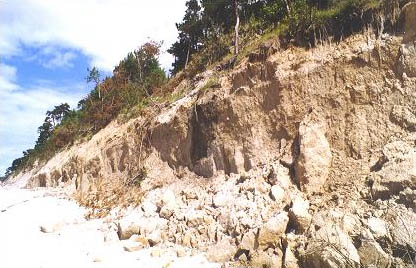| Klaipeda - Lithuania |
| Complete description
of case study |
PHOTO OF THE SITE
|
|
 |
|
CASE STUDY
| Title | Klaipeda |
| National level | Lithuania |
| Regional level | Klaipeda province |
ABSTRACT
|
The case study covers the northern part of the Lithuanian Baltic coast within three municipalities: Klaipeda and Palanga urban municipalities and Klaipeda rural municipality. The entire study area is the favourite destination for summer holidays in Lithuania. Wave activity and the wind-induced surge during storm events are the principal physical erosion agents in the case study area. In addition, human intervention has caused the deficit of sediments on the mainland foreshore and beaches and significantly reduced the resistance of the mainland coast. This situation makes the coast of the case study area particularly vulnerable in the face of the increased frequency of storms in the second half of the 20th century. The most popular coastal protection policy in the case study area is limited intervention through coastal foredune and forest management, as well as through submerged nourishment aimed at stabilizing the coastal zone, particularly the recreational beaches.A national shoreline management strategy for Lithuania is currently being considered, which might include more active shoreline management policy measures aimed at holding the shoreline at Karkle and Butinge. |
BASIC INFORMATION
| Coastal characteristics |
|
| Policy options | Limited
intervention Hold the line (being considered) |
| Socio-economic activities | Industry, transport and energy, tourism and recreation, urbanisation, fisheries (small scale), agriculture and forestry (small scale), nature conservation. |
| Engineering techniques | Foredune and forestry maintenance, submerged nourishment. |
SOURCE
| Name | Dr. Ramunas Povilanskas |
| Institution | EUCC Baltic office |
| Telephone / fax | +37 (0)6312739 or +37 (0)6398834 |
| ramunas@corpi.ku.lt |